Current research students
Our PhD and MLitt students work across four schools researching a wide array of topics. Current NCAD PhD and MLitt students within each school are listed here.
Clyde Doyle - Towards the Omnicentre
Supervisor(s): Dr. Marcus Hanratty, Dr. Caoimhe McMahon
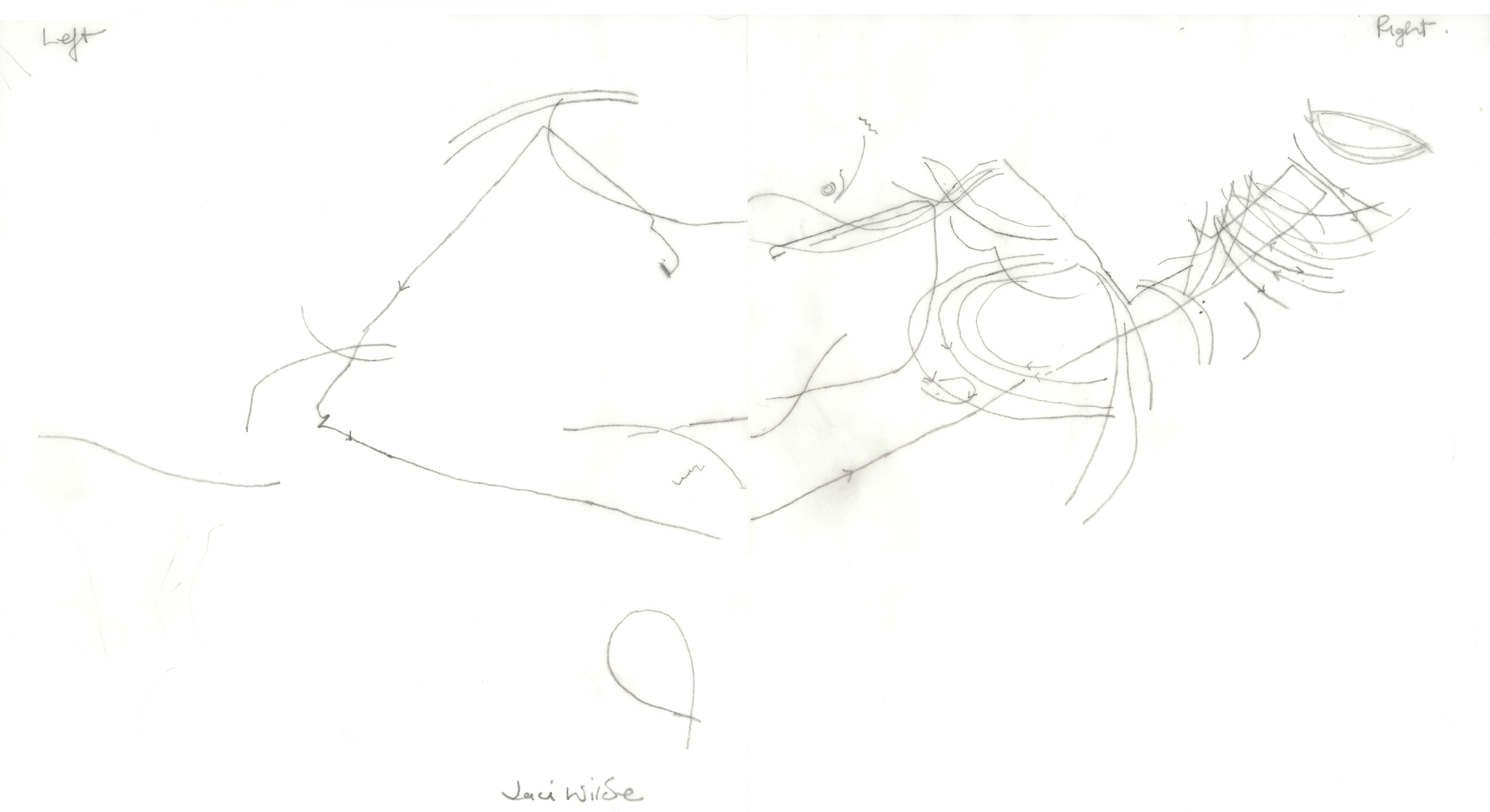
Record of bird encounters on Derry’s city walls during the Lines of Flight workshop (participant Jaci Wilde)
It has become increasingly clear that our modern human modes of living are incongruous with the natural systems that sustain us and other lifeforms on our planet. Modern design has been a major contributor to these systemic conditions of structured unsustainability, what Tony Fry calls its ‘defuturing effects’. What is required of design are more than minor adjustments to methodologies, or new design tools, but a radical shift in perception, comprehension and practice. My research-by-practice attempts to create conditions for new ways of seeing and thinking about ourselves (humans) and others (the more-than-human) with the aim of not just de-centring the human but moving towards a shared centre with the ultimate aim of facilitating ecological design practice. Using a diffractive methodology, I am currently developing experiments and experiences for design practice (experiential learning opportunities) which can be described to varying degrees as radical, relational, bio-regional, non-verbal, ontological, troubling, embodied and performative. These can be used by designers, design educators, and non-designers to listen to those more-than-human voices, challenge the unecological status quo, trouble current modes of design practice, and hopefully engender new ones.
Avril Buttle - Cross curricular opportunities observed in the secondary school visual art classroom.
Supervisor: Dr. Isobelle Mullaney
What are the cognitive aspects of art education?
How can engagement with art processes inform human development in other areas/subjects/professions?
Can art specific methodologies and practices benefit other subjects?
Art teachers are often isolated in the Irish secondary school context and often feel neglected in terms of subject recognition and academic respect. With a curricular shift across the board that encourages students to be more self-critical and reflective of their learning, does art as a subject have anything to offer other subjects in terms of collaboration and sharing reflective critical skills that are embedded within art practice? Art students practice self-reflection daily through use of the sketchbook and engagement in the ‘art crit’ and look and respond sessions. Studies have shown that engagement with the traditional ‘art crit’ develops student resilience along side the practice of keeping a reflective learning artefact (sketchbook/notebook/annotation of progress and work). Could these practices improve the teaching and learning in other subjects? Contrastingly, could art teachers learn from other subject teachers through engaging in professional observations?
The researcher (full time visual art secondary school teacher) proposes to explore the research questions using the action research method. It will be carried out in a co-educational Irish community secondary school context. The school serves a rural catchment area in southeast Ireland and has a current enrolment figure of 461 mainstream students. The school is part of the Delivering Equality of Opportunity in Schools initiative and is a National Behaviour Support Service partner school.
___________
Fiona Byrne (MLitt) - Building sustainable education reform: Can a design-led approach to teaching and learning support highly effective and responsive teaching practices?
Supervisor: Dr. Dervil Jordan
___________
Andrea Cleary - An Investigation to Process-led Sustainable Approaches to Teaching Art in Initial Teacher Education
Supervisor: Dr. Dervil Jordan
___________
Rhian Foley - Does the NCAD ITE program effectively prepare student art teachers with the perceived attitudes, knowledge and skills needed to implement an inclusive art education in mainstream post-primary schools?
Supervisor: Dr. Isobelle Mullaney
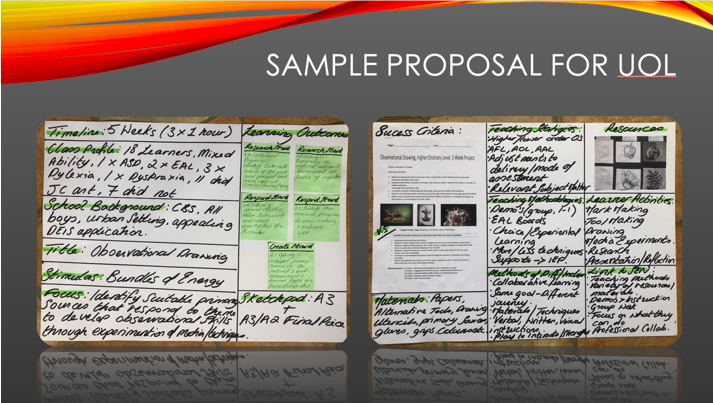
Sample proposal for UoL from the pilot SEN/inclusive education workshop in NCAD by Rhian Foley
A case study of inclusive practice preparation in the National College of Art and Design, delivering teacher education across undergraduate and postgraduate programmes. Researching and analysing the levels of positive attitudes, self-efficacy, and perceived preparedness of current students and NQAT’s, through various means. The perceived shortcomings in the current provision will be identified and used to design and implement a module to address these.
Educational inclusion has become increasingly broadened to include the catering for the needs of all children, including those who may be vulnerable, disenfranchised, from various cultures or ethnic groups, may have a special educational need and/or disability or in poverty. Current research and literature suggests that there is a definite need for investigation and exploration of this subject area now, because of the movement in both public and political opinion to integrate and/or reintegrate pupils who may fall into one or more of the categories mentioned in the above paragraph, into mainstream education in Ireland. This research aims to look at the inclusive education module taught within the professional master of education model and advise how to better prepare inclusive practitioners of post-primary visual art education. There is a need for research in this area of teacher training as the perceived lack of teacher training and preparedness is the single greatest challenge that the majority of studies have found, that prevents successful inclusive education (Mahat, 2008). The researcher, who is a full-time secondary school art teacher, will underpin the research with inclusive education theory with a pragmatic approach. This approach will consist of different research methodological tools such as, questionnaire, case study and semi-structured interviews.
Some of the research objectives include:
- What are the expectations of student art teachers from the PME/BA inclusive education module?
- What are the current reactions of student art teachers to the PME/BA inclusive education module?
- What are the expectations of initial art teachers from the teaching practicum?
- What are the reactions of initial art teachers to the teaching practicum?
- What does effective inclusion in the visual art classroom look like?
- Are students with special educational needs or students from minority groups being integrated or fully included in all aspects of art as a subject?
- Are current inclusive education policies being implemented effectively by teachers in mainstream secondary art classes?
- What are the benefits and challenges that art teachers have in the provision of an inclusive art education for their students?
- Does art, as a subject lend itself more to inclusive practice than other subjects for students?
___________
Lucy Hill - 'Posthuman material literacy' - A tool for early childhood visual art education (Irish Research Council Postgraduate Scholar)
Supervisor: Dr. Dervil Jordan
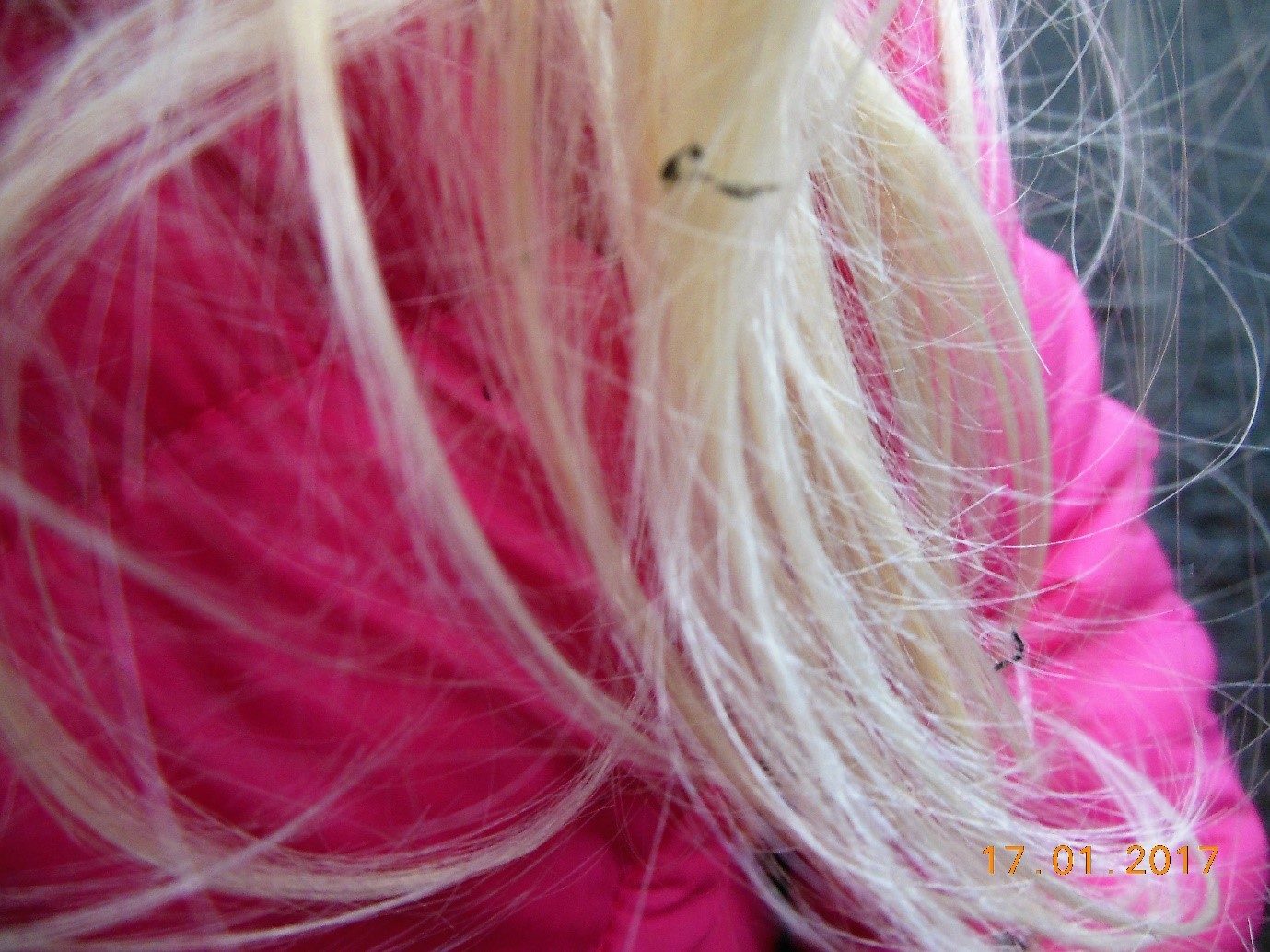
‘Fieldwork’ 2017 Lucy Hill
My project explores the intersections between Art as a ‘poetic force’ (or that which brings something new into being) and early childhood learning and care. While situated within the historically established, pedagogical importance of active learning through engagement with materials in Early Childhood Education, it also aims to acknowledges the complex ethical, ontological, epistemological and pedagogical value of young children’s everyday encounters with materials. Through Spinozist Posthuman philosophy, Feminist New Materialism and Affect theory, the research finds processes of literacy, learning and caring to be affective material assemblages, rather than anthropocentric modes of self-expression or intentional meaning making. From the starting point of the decentralised human subject in non-verbal artistic practices with materials in early childhood, the research contributes to thinking about the implications of the entangled nature of learning and caring as always materially, and thus ethically, located concerns in the context of the Anthropocene.
Awards related to this research
Irish Research Council Postgraduate Scholarship 2018
Exploring and Thinking Bursary Award 2019, Dublin City Council
Thomas Dammann Junior Memorial Award 2017
Presenter & Panel Participant, Rosi Braidotti Summer School, (Posthuman Ethics in the Anthropocene) Utrecht University 2017.
Inaugural John Coolahan Early Years Artist in Residence, The Ark Children’s Cultural Centre. Dublin 2018.
The Arts Council Travel and Training Award 2017
Three book chapters forthcoming (2020) in Routledge, Sage and Springer publications.
___________
Fiona King - What does it mean to teach and make art that is of and for our time?
Supervisor: Dr Siun O Hanrahan and Dr Audrey Bryan (DCU)
___________
Deirdre Smith - The interactive relationship between the visual art curriculum and the gallery experience at the primary school level through a blended learning approach while exploring the Froebel ethos of learning (working title)
Supervisors: Dr. Patsey Bodkin and Dr. Michael Flannery
The purpose of this action research is to analyse and question the engagement of primary school children in the gallery experience. The researcher (currently a specialist art teacher in a primary school) will focus on the visual art curriculum at primary school level paying particular attention to the draft curriculum framework and the ‘looking and responding’ stand from a teacher/learner perspective. This study will be underpinned by the Friedrich Froebel philosophy of autonomy during the creative and research process using a blended learning approach to contextualise the question, where learners can access the gallery both directly or remotely.
A theoretical bricolage will be used for presenting various insights and methodologies of this constructivist collaboration between gallery education and the visual art curriculum in primary school. It will investigate the relationship between exploratory creative processes, innate children’s artistic flow, non-discursive experiences, embodied responses, intrinsic multisensory experiential learning and visual thinking strategies.
This ethnographic study will analyse and question how primary school teachers can use such gallery education for art and other subject teaching purposes by critically examining perspectives, discourses and possible constructs of effective creative learning.
Ali Raza - Genocide, trauma, memory, and art: The Kurdish experience
Supervisor(s): Des Bell, Philip Napier, Dr. Ronit Lentin (TCD)
----------
Pamela Jean Calore - Migration struggles in Europe and along borders in the US and Mexico
Supervisor(s): Dr. Mick O’Kelly, Dr. Emma Mahony
Wedding on the Mexico/USA border
I investigate links between cultural and geographical divides, focusing on international borders, migration of people, goods and labor. My practice is creating art-based mixed media projects covering personal migration stories, preservation of cultural rights, and my own life experience of growing up in the transportation industry.
My research goals are to dive deeper into the documentation of displacement in Europe, and the borders issues between Ireland and the United Kingdom. The purpose being to unpack the ways in which art can transcend dehumanizing political dialogue about migration. To address the negative conations of the word migrant, by personalizing the individuals through the art of refugees, migrants and relief workers.
• How might art capture and bridge the gap between cultural divides that exist because of political turbulence within societies?
• How does migration affect cultural rights and how does a migrant community maintain (La Survivance) the survival?
• How can art be used as a form of communication that crosses borders and forms bonds in places where alienation separation and displacement exist because of war, social inequality, and nationalism?
“En Los Migrantes vemos nuestras humanidad” ' “In Migrants we see our own humanity” (La Posada ,Dec. 2019) US/Mexico
----------
Brendan Dowling - The Invention Of Greek Landscape: The Role Of Fred Boissonnas Photography and Western Hellenism In The Creation Of The Imagination Of Greek Landscape
Supervisors: David Crowley, Des Bell
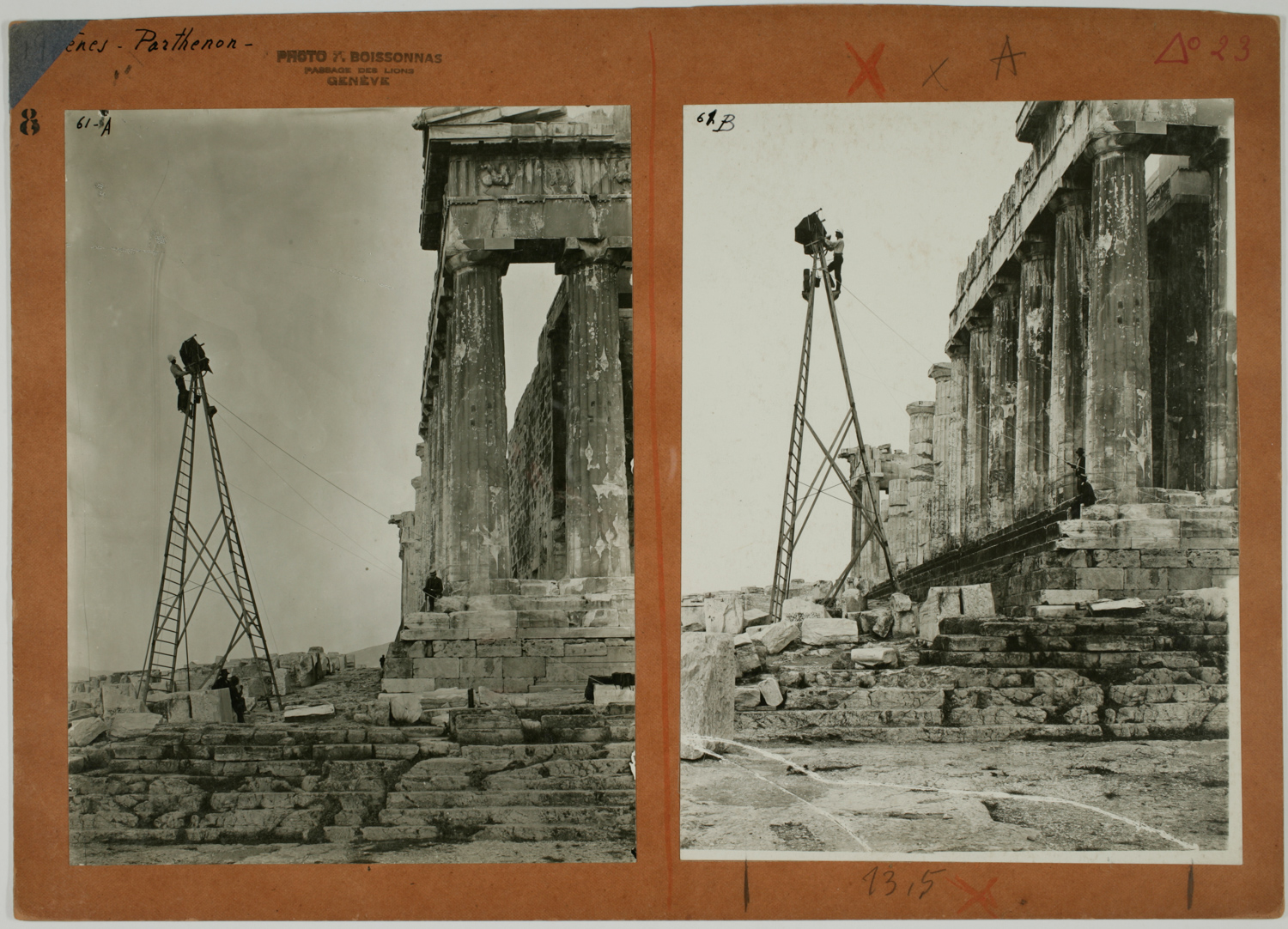
Permission of Thessaloniki Museum of Photography
My research is focussed on examining Photography and the Greek Landscape through the work of Fred Boissonnas.
The work of Swiss photographer Fred Boissonnas was arguably one of the most important in Modern Greek history. Spanning some thirty years from 1903 to 1933, Boissonnas photographed the ancient Greek landscape and its archaeological ruins, documenting the expansion and unification of modern Greece. His practice was indebted to the C19th practice of archaeological photography and, as such, might be seen as its extension into early C20th politics. Boissonnas framed his subjects in a manner that drew upon long-established visual tropes. Western Hellenism and art historical painterly sensibilities regarding the ancient Greek landscape, impacted on the imaging practices of Boissonnas. His idealised picturing of Greece and its people sustained a national imaginary, which sought to legitimise Greek claims to extend its territory and sovereignty based on classical Greek archaeology and heritage. My research is based on three case studies.
1 - History Into Landscape: Photography of Ancient Greece And Greek Government exhibition at The Paris Peace Talks Of 1919, examines the role of Fred Boissonnas in the Greek government photographic exhibition at the end of the first World War. Here the need and process for reimagining the Greek landscape in 1919 is explored. The study examines how important it was to reconfigure western Hellenism and appropriating it to suit the political aims and territorial claims of the Greek state. It looks at how Fred Boissonnas’ images played a significant role in the formation of a nationalist imaginary by creating a popular geographical imagination which promoted Greece as an emergent state. The association of image, texts and modes of display forged a popular imagination with regards to Greece.
2 - Myth Into landscape – Photographic Movement Through Space examines the journey taken by Boissonnas and Victor Bérard to recreate the voyage of Ulysses and its photographic work and subsequent publication “Dans La Silage D’Ulysse - In the Wake Of Ulysses”. This study focuses on the choice and arrangement of the photographs for the book of 1933 and how they operate as a body of images. It examines how the still images deployed by Boissonnas are cinematic. I argue that it is because of the influence of photography and because of cinema that Boissonnas takes this approach. In addition, I argue that Boissonnas adopts a unique phenomenological approach to his representation of the Homeric subject.
3 - People Into The Greek Landscape, examines how Photography and Ethnography combine through the practice of Boissonnas and are employed and adopted by the state. I also examine how his work influenced the image of Greece and how he effectively establishes a kind of set of viewing positions, for anybody representing the Greek landscape. This study further examines his influence on the important Greek photographer Nellys and compares his work with her images of the 4th August regime.
_________
Fiona Kelly - A Field of Multiple Destructions (Working Title)
Supervisors: Dr. Declan Long, Brian Hand
De Certeau's adage ‘stories about places are makeshift things, they are composed of the worlds debris’1 is an epitome of my artistic research. The idea of the worlds debris manifests in the re-appropriation of materials in a state of rejection, the reprocessing of existing waste in lieu of perpetuating an extractive, nonreciprocal relationship with the land.
This research encompasses interdisciplinary practical and theoretical research rooted within the idiosyncratic site of the Spilt Hills Esker, Co. Westmeath. In utilising the lands lived experience, its metamorphosis and multiple destructions, I will examine the historical lexicon of extraction and land use.
This research will be a synthesis of knowledge generated by personal and intensive material research alongside collaborations with material innovators, geologists and mineral engineers. Artistic practice embodies and drives the research; the final thesis will be an entwining of praxis, reflection and research. New knowledge will be site specific and generated through material engagement, walking, interviews, public engagement and writing.
Fiona Kelly is a visual artist who lectures in Fine Art & Contemporary Applied Art at the MTU Sharman Crawford campus, Cork.
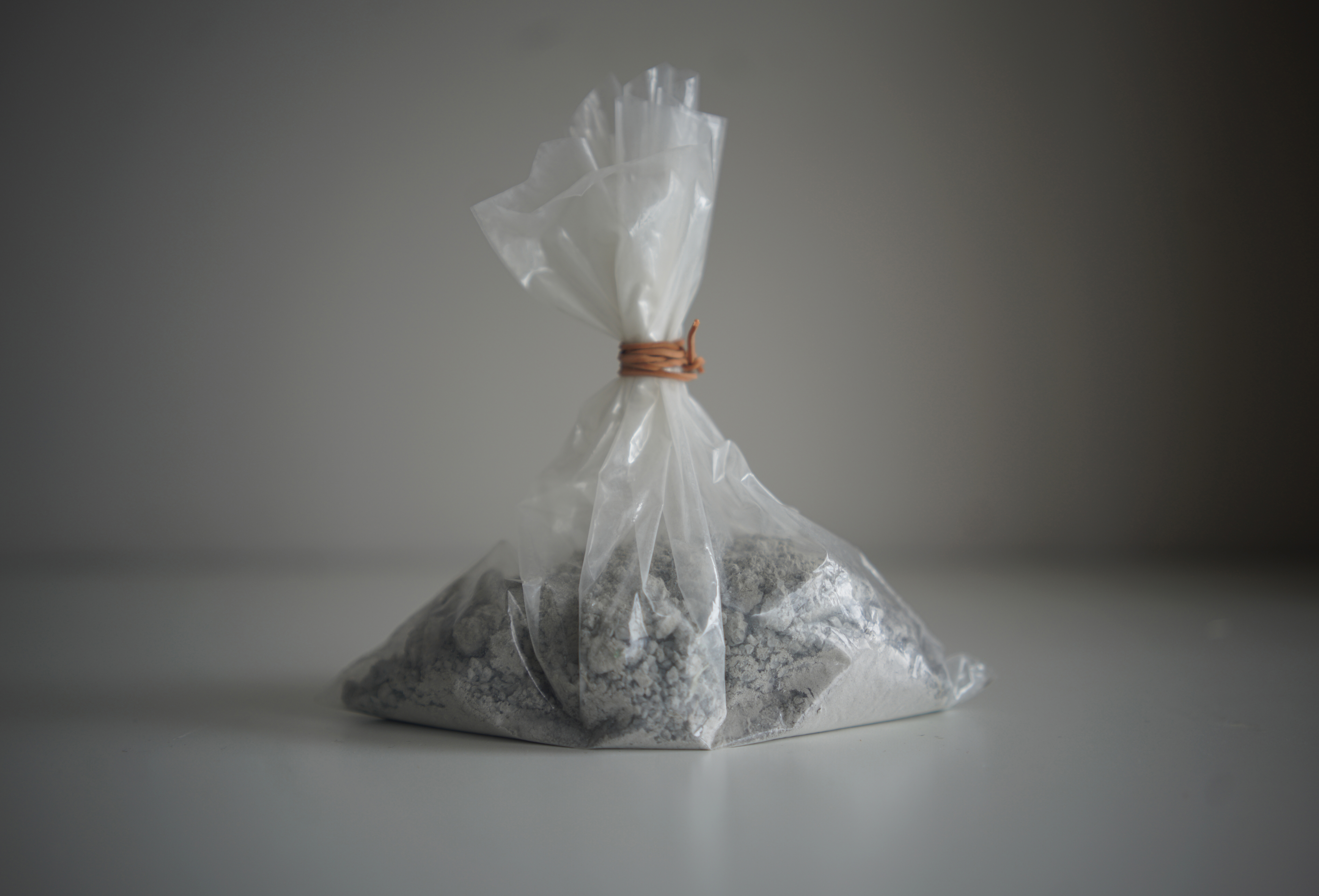
Image: Dust; for a Passive House
_________
Seamus Nolan - Modalities of participation and spectatorship: a practice based enquiry into discourses and methodologies of participation and spectatorship in contemporary visual art museums
Supervisors: Dr Lisa Godson / Dr Roisin Kennedy, UCD / Dr Lisa Moran / Christina Kennedy IMMA
Working with the collections department of the Irish Museum of Modern Art, this practice-based study examines the role of the contemporary museum in representing marginal cultures with a specific focus on Irish Travellers. The research emerges from an extensive and ongoing inquiry into the role of Traveller material culture within museums and collections in Ireland. In recent years, museums and galleries have embraced their social role by seeking to engage with diverse communities but the matter of how Traveller culture is engaged by the contemporary art museum has yet to be explored in a systematic fashion. The project will explore contemporary models of sustained engagement and co-creation practices which manifest new ways museums might map or remap marginal cultural terrains.
_________
Caroline O'Brien - Fashioning material that matters: An examination of design and making at the National Ballet of Canada
Supervisors: Dr Lisa Godson, Hilary O’Kelly
This thesis is an analysis of ballet costume at the National Ballet of Canada from 1951 until 2012, the year that marked the sixtieth anniversary of the Company. The thesis focuses on the classical repertoire created between the years 1972 and 1999. It aims to establish a design process in the costume workshops that represents a transnational culture of ballet making the style of costume recognizable across major companies around the world. It discusses the emergence of Arts and Culture in Canada post-war as a way of establishing the Company as a national cultural icon with influence from British and Russian Ballet. Costume is treated as a material object that constitutes the dancer, thereby revealing the role of the makers as co-authors in the performance.
A range of artifacts such as tutus, designer sketches, show bibles, photographs and programmes are analysed in the thesis, mainly to show how the objects are used to create a material habitus in the making of costume for classical ballet. As well as actual objects, this thesis analyses how certain discourses of materiality are played out in the performance of ballet, particularly through the rituals employed by dancers in the dressing room and back-stage personnel during a performance.
The thesis argues that costume is integral to the performance of ballet, in fact constitutes the body of the dancer because it is built on and around the ballerina body. It is used to discipline the body in training, it co-authors the body in performance, and it lends recognition and identity to otherwise invisible designers and makers, materialising their work through the performance.
_________
Micheal Earley - William Earley (1872-1956)-Ecclesiastical Artist.
Supervisors: Dr. Paul Caffrey, Dr. Lisa Godson
Panoramic window in Church of St John the Baptist in Blackrock, Co.Dublin photographed by Michael Earley
Research Aims:
- To demonstrate the central role played by William Earley (1872-1956) in the development of the reputation of Irish Stained Glass in the period 1903-1950 while he worked in Earley Studios,Camden Street Upper, Dublin.
- To compile a comprehensive catalogue of his work and to demonstrate how he used the medium of stained glass as an expression of devotional religious art while maintaining his artistic integrity with a recognisible individual style.
- To show his development as an artist and his legacy to Irish Ecclesiastical Art.
Methodology:
This is a descriptive historical research project built upon library and field research. The library element consists of studying published books on stained glass , publications in NCAD and NIVAL (where there is an extensive Earley archive), Earley studio records still in family possession, and records of restored windows such as those of Abbey Stained Glass Studios. Church records and Dublin Diocesan Archives will assist in identifying relevant churches. Field research comprises on site recording of windows by photographic means having identified churches and convents with stained glass from Earley studios between 1900 and 1950. Further information will be gained by interviewing various family members and present day Irish stained glass manufacturers. The completed thesis will fill a gap in the history of a very fruitful era in Irish stained glass which spanned the first half of the twentieth century.
_________
Suzanne Freeman - Reading Materials. A practice-based-research investigation into interpreting the artefacts of James Joyce’s Ulysses for exhibition (joint registration with UCD) Supervisors: Dr Lisa Godson, Dr Emily Mark-FitzGerald (UCD)
_________
Sally O'Leary - Stephen Willats sharing the ethics of ‘self-responsibility’ with second order cybernetics
Supervisor(s): Dr. Francis Halsall, Dr. Declan Long
This research advances a new theoretical framework examining the work of Stephen Willats through a lens of second order cybernetics. As such Willats diagram for a Model of Social Interaction, expressed in terms of Artist | Artwork | Audience, is aligned to a cybernetic triadic model, articulated by the cybernetician Heinz Von Foerster, expressed as Observer | Language | Society. The research argues that the foundational ideology of both is concerned with the philosophical implications of self-responsibility and that the embodiment of this notion can be understood in terms of action and interaction.
My aim will be threefold, having established that my own theoretical frame corresponds with the second order cybernetics of von Foerster, I intend firstly, to show how Willats practice can be aligned within this same framework. Demonstrating that the development of Willats own theoretical frame, while influenced by multiple cultural factors, has at its root, been influenced by second order cybernetics. Secondly I will describe the important genealogical rise of cybernetics, expressed by von Forester, as ‘cybernetics of cybernetics’. This is interpreted and expounded by a number of cyberneticians closely connected to von Foerster, including Gordon Pask, Stafford Beer and Ranulph Glanville, that present a significant trajectory linking the principals of second order cybernetics directly into the art world, and with Willats himself. Finally I will draw together the theoretical models of von Foerster and Willats to demonstrate how Willats appropriation of this cybernetic framework can be understood in his practice.
The research concludes that Willats can be seen to trigger change within an operationally closed autopoietic (second-order) system. For Willats the potential of transformation is based upon the notion of self-responsibility. In cybernetic terms the research demonstrates that while Willats as an individual, cannot change the system (change can only occur within the system by the system); however as artist | observer within the system and irritant outside of the system, his perturbations can be seen to have activated change, albeit unpredictable, difficult to measure, understood as a whole, and observable over time.
_________
Henry Martin - American women art dealers: Establishing movements and markets for modern art between 1920-1950
Supervisors: Dr. Francis Halsall, David Crowley
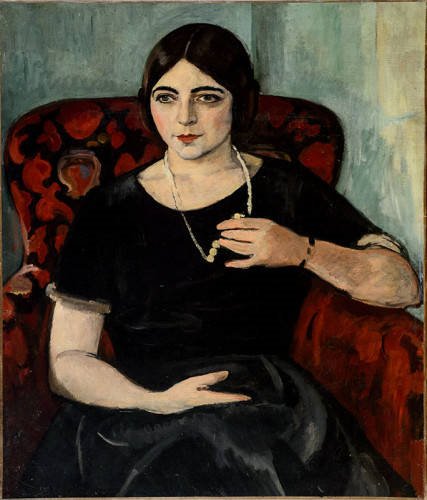
Portrait of Edith Gregor Halpert by Samuel Halpert, 1928, oil on canvas, Palmer Museum of Art
My research examines the way women dealers promoted modern art in America and the impact they had on the careers of artists and the development of artistic movements and communities. This interest was first established when I researched the dealer Betty Parsons for my biography Agnes Martin: Pioneer, Painter, Icon and expanded in my MRes dissertation Beatrice Judd Ryan: creating a modern art market in San Francisco 1925–1957. Nominated dealers for my PhD research include Marie Sterner and the Marie Sterner Gallery, Katherine S. Dreier and the Société Anonyme, Beatrice Judd Ryan and the Galerie Beaux Arts and Edith Gregor Halpert and the Downtown Gallery. One aim of this research is to explore how these dealers formed a bridge between two generations of art patrons: the Gilded Age collector (e.g. Isabella Stewart Gardner) and Depression Era museum founder (e.g. Gertrude Vanderbilt Whitney). Another aim is to examine the evolution of professionalism in American art; and the role of gender therein; particularly the relationship between gender and the avant-garde.
_________
Hugh McCabe - Ontology of the Digitally-Generated Image (working title)
Supervisors: Dr Francis Halsall, Dr Rachel O’Dwyer

Still from Lost State, Hugh McCabe and Suzanne Walsh, 2017.
My research is an investigation of contemporary digital image-making practices and techniques. In particular, my interest is in the situation whereby the generation of the image has become a process that is increasingly entangled with both algorithms and with data. Proceeding from the assumption that this entanglement represents a significant shift in our visual culture, the aim is to explore the implications of this with respect to our relationship to the image, and to attempt to elucidate exactly how such imagery does or does not differentiate itself from other forms of imagery which have been more rigorously theorised. A key theoretical touchstone for the project is the philosophy of Gilles Deleuze, and specifically his work on cinema, which decenters the role of the subject in the analysis of the image and emphasis notions of process. By examining in detail some key elements of digital image-generation - such as the rendering algorithms used in computer graphics - through the lens of this theoretical framework, I hope to contribute to an understanding of exactly how the integration of algorithms and data into image-making might require us to rethink what an image is.
Hugh McCabe is an academic, lens-based artist and musician. He lectures in Creative Digital Media at the TU Dublin Blanchardstown campus.
Publications:
McCabe, H. (2019) 'We Have Always Been Virtual: Gilles Deleuze And The Computer-Generated Image' in Proceedings of Artech 2019 (Ninth International Conference on Digital and Interactive Arts), Braga, Portugal, Oct 2019.
_________
Bláithín Mac Donnell - Storytelling in the digital age - how do we share and retell stories in the age of instant communication, documentation and image sharing
Supervisors: Dr. Rachel O Dwyer, Dr. Declan Long
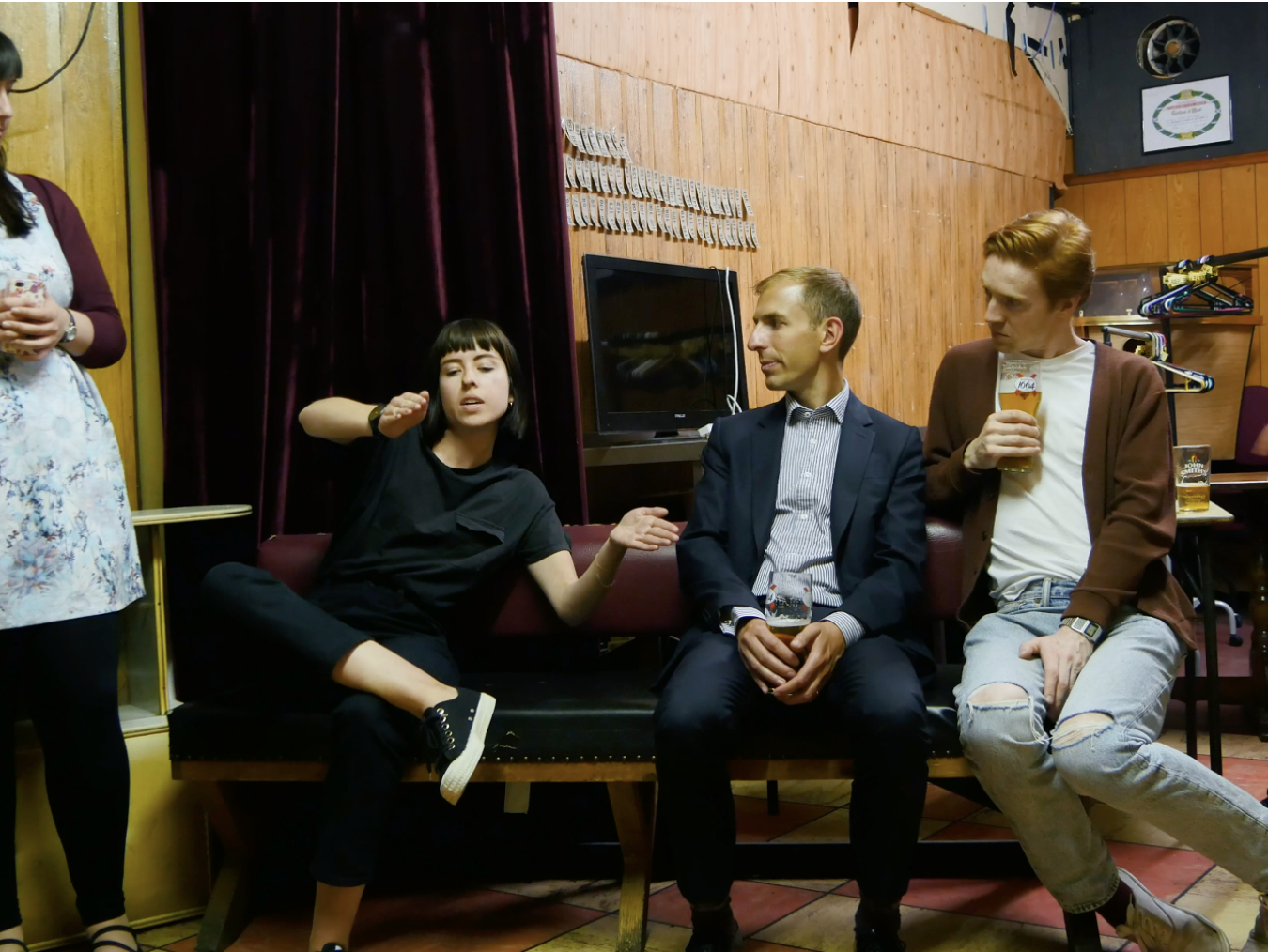
'they generally don't like to be alone' live performance for Love Sick, Laugh Magazine Live, Bethnal Green Working Men's Club, London, 2018 Bláithín Mac Donnell
My practice-based research draws on storytelling techniques to explore the ways in which the Internet is shaping orality. At the core of social media is the need to share, to tell a story of some kind. I am interested in what would happen if our digital apparatus were taken away. Would language and body gestures endure as our tools to recite. Particularly, how we can engage in the language of the Internet to create abiding stories beyond the screen. Drawing on texts concerning orality alongside an ongoing investigation into the inherent performative nature of the narrator through my spoken word performances, I hope to unpack how we share and retell stories today. Further to this, exploring the Seanchaí archive in the National Folklore Collection will enable me to investigate the legacy of the historical Irish storyteller on contemporary Irish narration. I hope to create a body of research and work which contributes a new voice to the contemporary discourse of storytelling.
_________
Donna Rose - Documenting, Managing, and Interpreting the Material Heritage of Ireland’s Magdalene Laundries
Supervisors: Dr. Lisa Godson, Prof. Hugh Campbell and Brenda Malone (NMI)
This multidisciplinary project examines the physical remains of Irish Magdalene Laundries, considering their changing meanings as objects of labour and containment to a highly disputed material realm of sensitive heritage.
Central case studies examine the evolving circumstance of the last Irish laundry site in state ownership and the collection of materials by the National Museum of Ireland, drawing from survivor testimony, theories of material culture, and existing modes of architectural, museological, and sensitive heritage practice.
This study ultimately advocates for a survivor-informed ethical framework to refer to when interpreting, mediating, and charting a course for collections, artefacts, and buildings that have a traumatic past, particularly relating to the histories of institutional abuse in Ireland.
_________
Maeve Sookram - Irish Identity through the Home: The Suburban Mid-Century Transformation
Supervisors: David Crowley, Dr. Lisa Godson
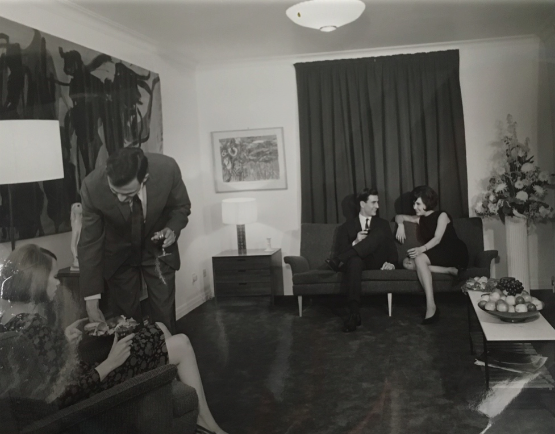
Sales promotion brochure for housing at Dundrum Heights, Dublin. Image courtesy of Wates Limited(UK).
This thesis contributes to our understanding of the material culture and social change which evolved in suburban Dublin homes from 1955-1975. It explores how contemporary affordable media influenced women in the decoration, design and management of their new privately-owned suburban mid-century homes. It systematically studies the shift from rural to urban living looking at public and private space, boundaries and mediates through new lifestyle options and choices available to the housewife.
As part of this thesis, oral history gives new understanding of everyday life and the challenges and opportunities that faced the family adjusting to and embracing modernity.
The focus of this research includes:
-
Housing estate layouts, house design and decoration
-
Impact of affordable media on the role of housewife
-
Family engagement with new social space and new technologies
_________
Jennie Taylor - Applications of feminist worldings, diffractive methodologies and entanglements through fictional narratives of art objects created during 1952-1960 New York City
Supervisors: Dr. Francis Halsall, Dr. Declan Long
Drawing from feminist philosopher of science Karen Barad, my practice-based PhD adopts a diffractive methodology through forensic archival research of physical properties of selected artworks from post-war New York art history, particularly work made and exhibited in Downtown, Manhattan between 1952-1960. Particles in artworks’ material are treated as characters to construct written narratives. The content of each narrative is informed by the behaviour of each particle and the position of the selected artwork within art history. This work presents fictional versions of existing histories rooted in verifiable information from artworks’ material. I address Barad’s concerns by practicing an ethico-onto-epistemological approach to art history in which intra-actions of phenomena occur in fictional narratives. Fiction is used as an instrument to world the contents of art objects into entangled worldings. In my research, a thick past is present through the existence of art objects and their archives; artworks are presented as agents of history to a point of exaggeration in order to create and take up space in historical narratives.
_________
Wei Yifeng - From User to Developer—Artistic Intervention into Technology and Society
Supervisors: Dr. Francis Halsall, Dr. Rachel O'Dwyer
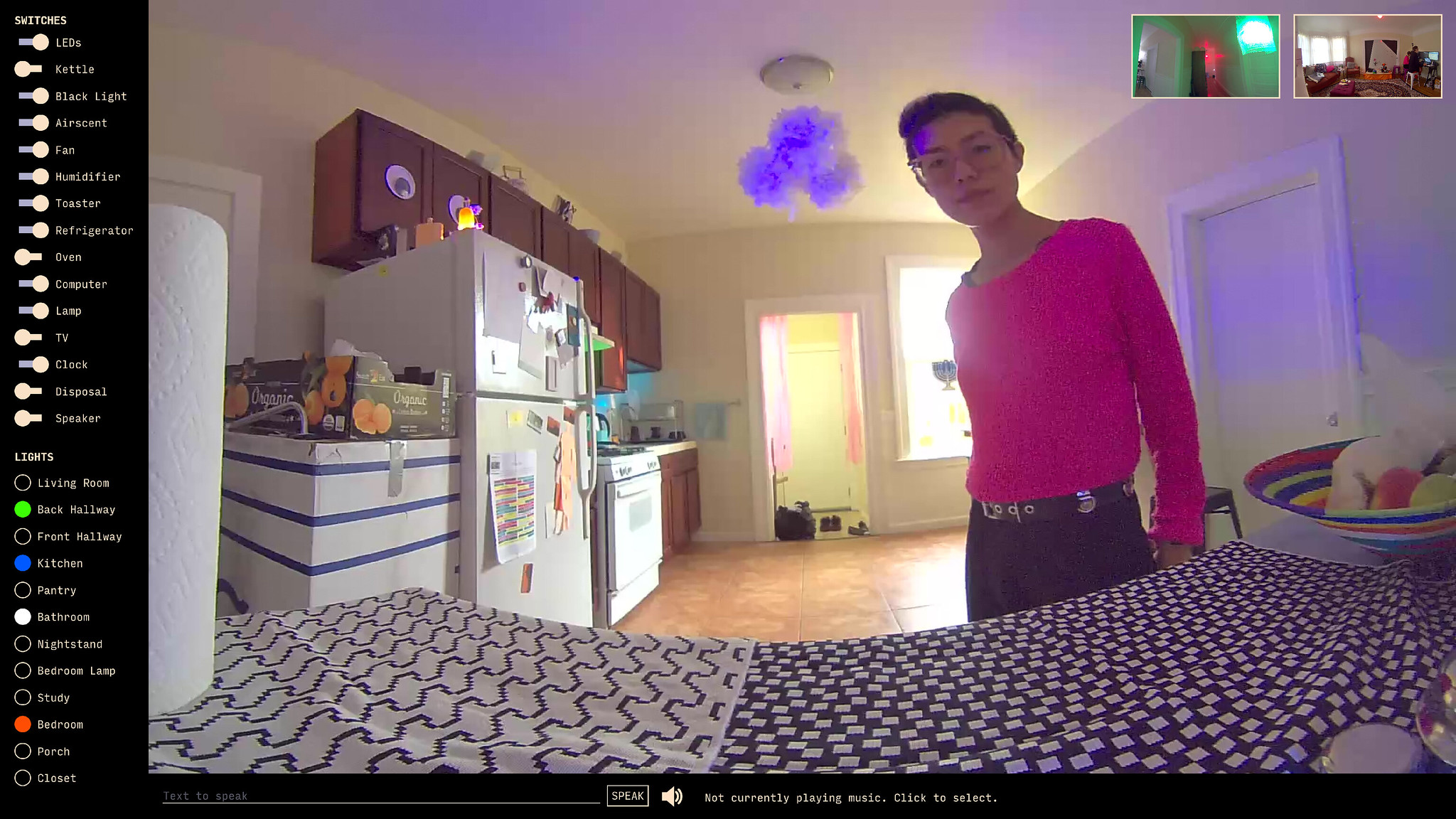
SOMEONE / Lauren Lee McCarthy, CyberArts exhibition / Ars Electronica, 2019 reproduced here under a Creative Commons License
In 1991, Mark Weiser forecasted that “The most profound technologies are those that disappear.” Currently, we unconsciously embrace technological magnates and take technologies for granted. Art practice, inevitably, evolves accompanied by these breakthroughs. However, the study of the mutual correlation between art and technology disproportionally concentrates on how artists utilize scientific iconography, methodologies, and concepts to create art. Simply put, the constructive impact the artists pose on the technology itself has received scanty attention.
Hence, this research will explore this group of practitioners who are not only artists but also significant contributors to technologies. They artistically participate in technology and subsequently shape society using their work. This research aims to contend that they humorously and sharply pierce the seeming reasonable technological narrative fabricated by tech giants and translate the exposure of discomfort of everyday life into a chance to reflect on technology again. By developing technologies, artists indeed develop cultural software that can modulate the current social system and shaping digital culture.
_________
